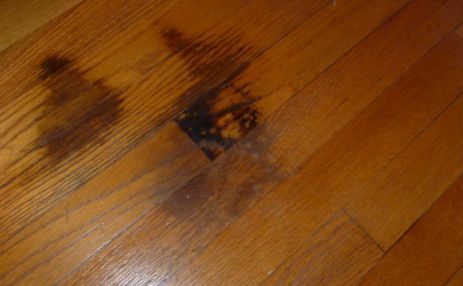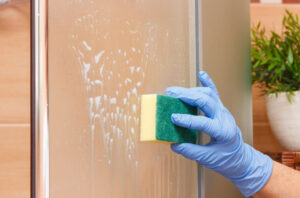
Renewing Elegance: A Comprehensive Guide on Removing Dark Stains from Hardwood Floors
Introduction
Hardwood floors are timeless and elegant, but the appearance of dark stains can tarnish their beauty. Whether caused by water damage, pet accidents, or stubborn spills, tackling dark stains requires a strategic approach. In this comprehensive guide, we’ll explore effective techniques, preventive measures, and common questions surrounding the removal of dark stains from hardwood floors.
I. Understanding Hardwood Characteristics
1. Wood Species Variability:
Different hardwood species may react differently to stains. Understanding the type of hardwood in your home is crucial for effective stain removal.
2. Sealed vs. Unsealed Hardwood:
Sealed hardwood is more resistant to stains than unsealed ones. Identifying your floor’s finish is the first step in the stain removal process.
II. Preventive Measures
1. Regular Maintenance:
Implement a routine cleaning schedule to prevent dirt and stains from settling on the hardwood surface.
2. Area Rugs and Mats:
Place area rugs and mats in high-traffic areas and under furniture to minimize the risk of stains.
3. Prompt Cleanup:
Swiftly clean up spills, accidents, or water to prevent them from seeping into the wood and causing dark stains.
III. Identifying Dark Stains
1. Water Stains:
Water stains can result from spills or leaks. They often appear as white or dark rings on the surface.
2. Pet Stains:
Pet urine can leave stubborn dark stains. The acidity and compounds in urine can react with the wood, causing discoloration.
3. Stubborn Marks:
Heavy furniture, shoes, or sharp objects can leave marks that penetrate the wood, resulting in dark stains.
IV. Techniques for Removing Dark Stains
1. Light Sanding:
Gently sanding the stained area can remove the surface layer, revealing a fresh wood surface. Use fine-grit sandpaper and be cautious not to damage the surrounding finish.
2. Hydrogen Peroxide and Baking Soda:
Create a paste with hydrogen peroxide and baking soda. Apply it to the stain, let it sit, and then gently rub with a soft cloth. This method is effective for water stains.
3. Vinegar and Water:
Mix equal parts of white vinegar and water. Dampen a cloth with the solution and gently rub the stain. Vinegar is effective for water and pet stains.
4. Oxalic Acid:
Oxalic acid is suitable for dark stains caused by iron or tannins. Follow the manufacturer’s instructions and use it cautiously as it can be abrasive.
5. Commercial Wood Stain Removers:
There are various commercial wood stain removers available. Follow the product instructions and test on a small, inconspicuous area first.
V. Remove Pet Stains by Cleaning
1. Enzymatic Cleaner:
Clean the pet stain area with an enzymatic cleaner designed for pet accidents. Follow the product instructions to neutralize odors and break down stains.
2. Sanding and Refinishing:
If the pet stain has penetrated the wood deeply, sanding and refinishing may be necessary to completely remove the stain.
VI. Addressing Water Stains
1. Blotting and Drying:
Address water stains promptly by blotting the area with a dry cloth. Use a wood floor cleaner to remove any remaining residue and dry the area thoroughly.
2. Refinishing:
For persistent water stains, refinishing the affected area may be required. Sand the stained area and refinish to restore the wood’s appearance.
VII. Swift Cleanup for Stubborn Marks
1. Wipe Away Spills:
Swiftly wipe away spills with a clean, damp cloth to prevent them from penetrating the wood and causing stains.
2. Vinegar and Water Mixture:
For stubborn marks, create a mixture of vinegar and water. Dampen a cloth and gently rub the mark. Vinegar’s acidity can help break down stains.
3. Baking Soda and Water:
Make a paste with baking soda and water. Gently rub the stain with a soft cloth, and then clean the area with a wood floor cleaner.
Frequently Asked Questions:
1. Can all dark stains be removed from hardwood floors?
While many dark stains can be addressed, complete removal depends on the severity and depth of the stain. Some stains may require professional refinishing.
2. How does wood species affect stain removal?
Different wood species have distinct reactions to stains. It’s essential to understand your hardwood species for effective stain removal techniques.
3. Is sanding necessary for all stain removal methods?
Sanding is not always necessary, but it can be beneficial for removing surface stains and refreshing the wood. However, for deep stains, sanding may be required.
4. Can I use household items like vinegar and baking soda for all stains?
Vinegar and baking soda are versatile for various stains, but their effectiveness may vary. It’s essential to consider the type of stain and wood species before choosing a method.
5. What is the best way to prevent water stains on hardwood floors?
Promptly blotting and drying wet areas can prevent water stains. Using rugs or mats in high-traffic zones and ensuring a well-sealed finish also contributes to prevention.
6. Are commercial wood stain removers safe for all hardwood floors?
Commercial wood stain removers vary, and it’s crucial to choose products suitable for your specific hardwood floor. Always follow the product instructions and test on a small area.
7. Can pet stains be completely removed from hardwood floors?
Enzymatic cleaners are effective for pet stains, but deeply penetrated stains may require sanding and refinishing for complete removal.
8. How do I prevent dark marks caused by furniture?
Use furniture pads or felt protectors under heavy furniture to prevent scratches and marks. Regularly lift and move furniture instead of dragging it across the floor.
9. What if the stain persists after initial removal attempts?
If a stain persists, consult with professionals or consider refinishing the affected area. Persistent stains may require more extensive treatment.
10. Can I use DIY methods for refinishing hardwood floors after stain removal?
While some DIY methods can refresh the wood, professional refinishing may be necessary for optimal results. DIY methods like sanding require careful execution to avoid damage.
IX. Tips for Effective Stain Removal
1. Test in Inconspicuous Areas:
Before applying any stain removal method, test it in a small, inconspicuous area to ensure it doesn’t cause damage.
2. Follow Manufacturer’s Instructions:
Whether using commercial products or DIY solutions, follow the manufacturer’s instructions carefully for optimal results.
3. Address Stains Promptly:
Swiftly address stains to prevent them from setting in and becoming more challenging to remove.
4. Use Appropriate Cleaning Products:
Use wood floor cleaners that are specifically designed for your floor’s finish to avoid damage.
Conclusion: Reviving the Timeless Elegance of Hardwood Floors
Removing dark stains from hardwood floors is a process that combines understanding, patience, and the right techniques. By identifying the type of stain, considering preventive measures, and employing effective removal methods, you can revive the timeless elegance of your hardwood floors. Whether it’s water stains, pet accidents, or stubborn marks, taking a strategic approach ensures a successful restoration and allows you to enjoy the natural beauty of your hardwood floors for years to come.
Read about:How To Build A Shower Pan On Plywood Floor


